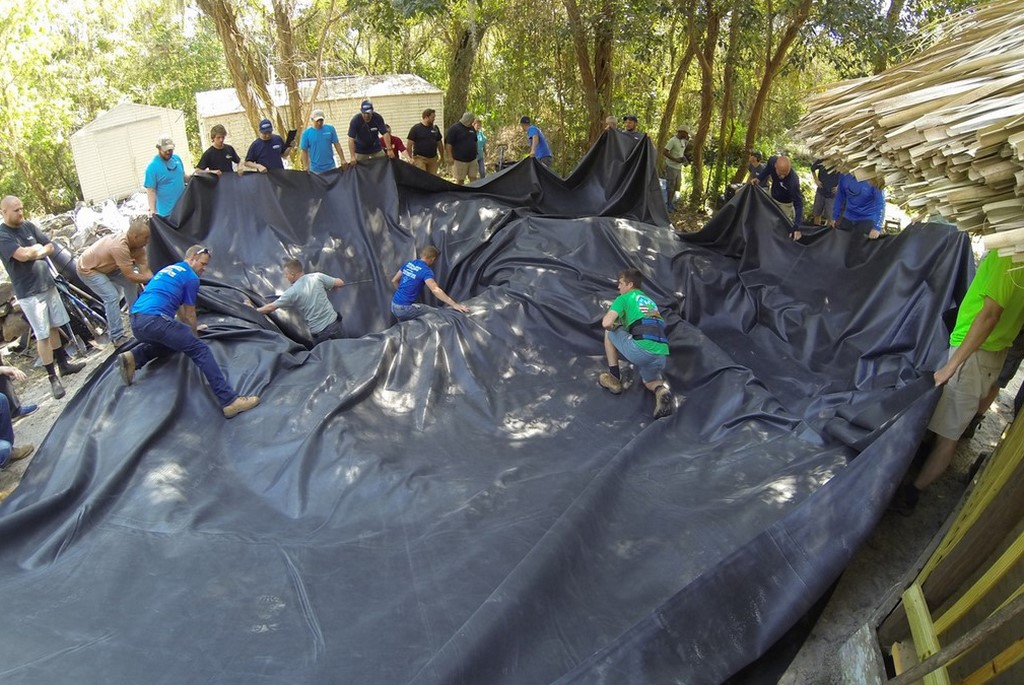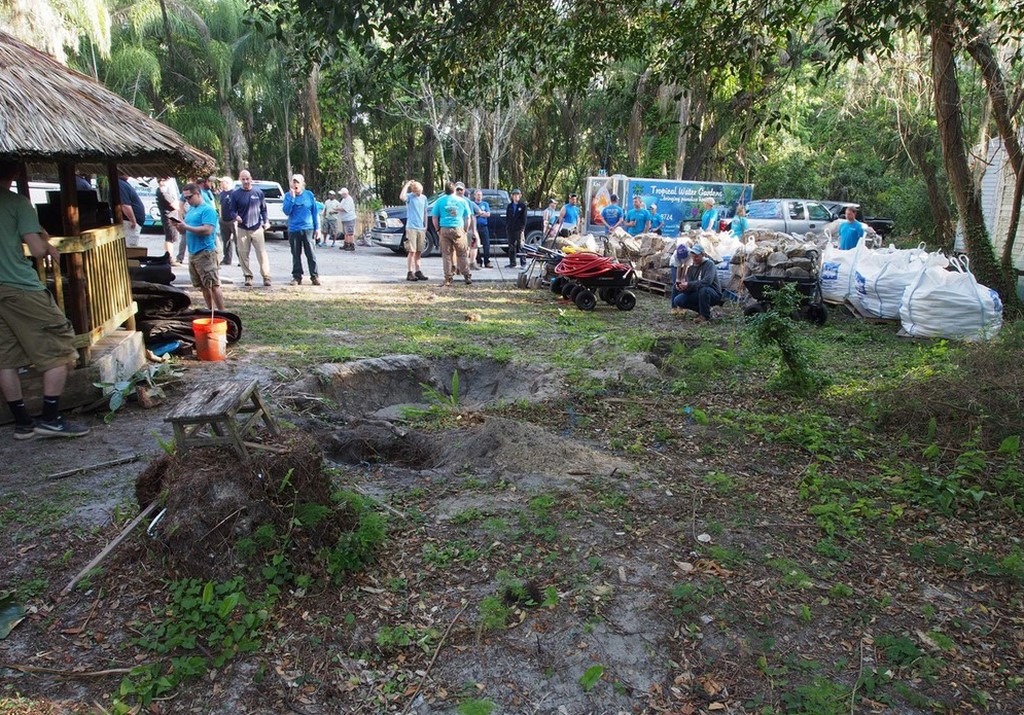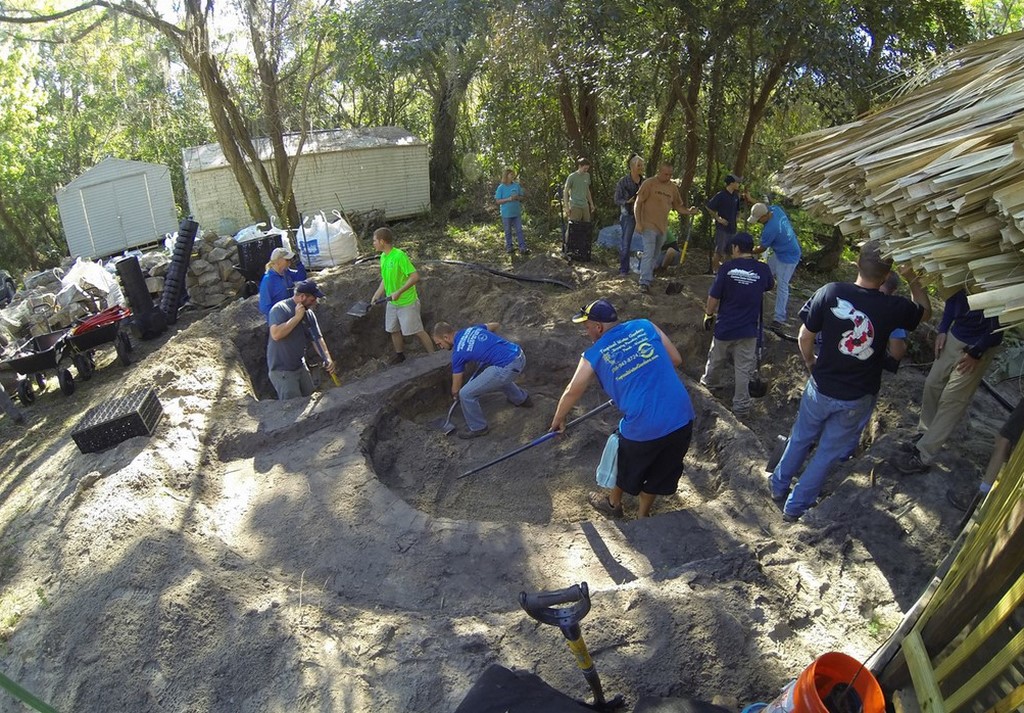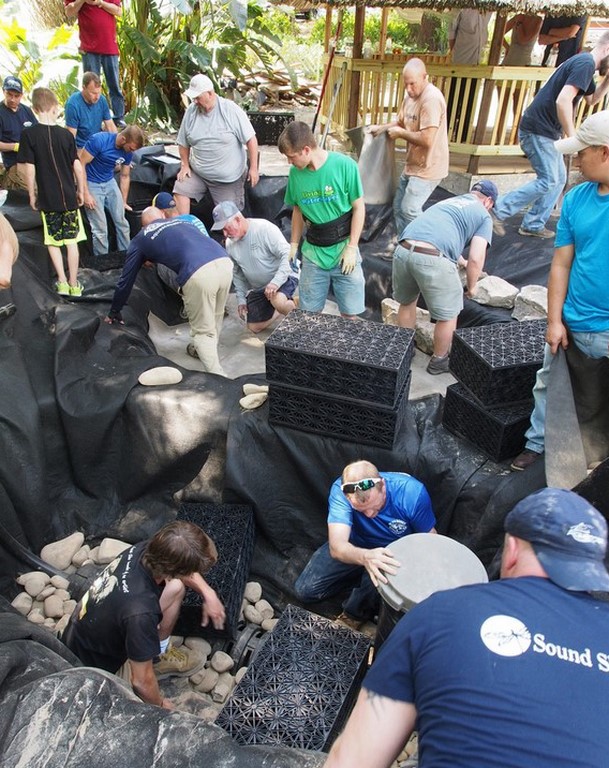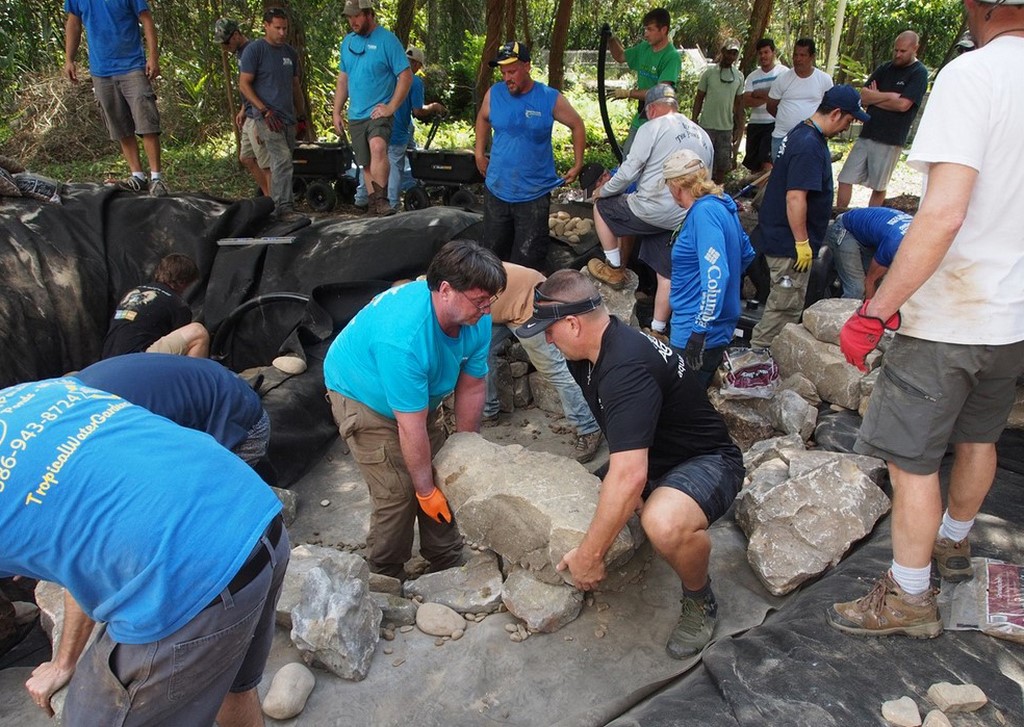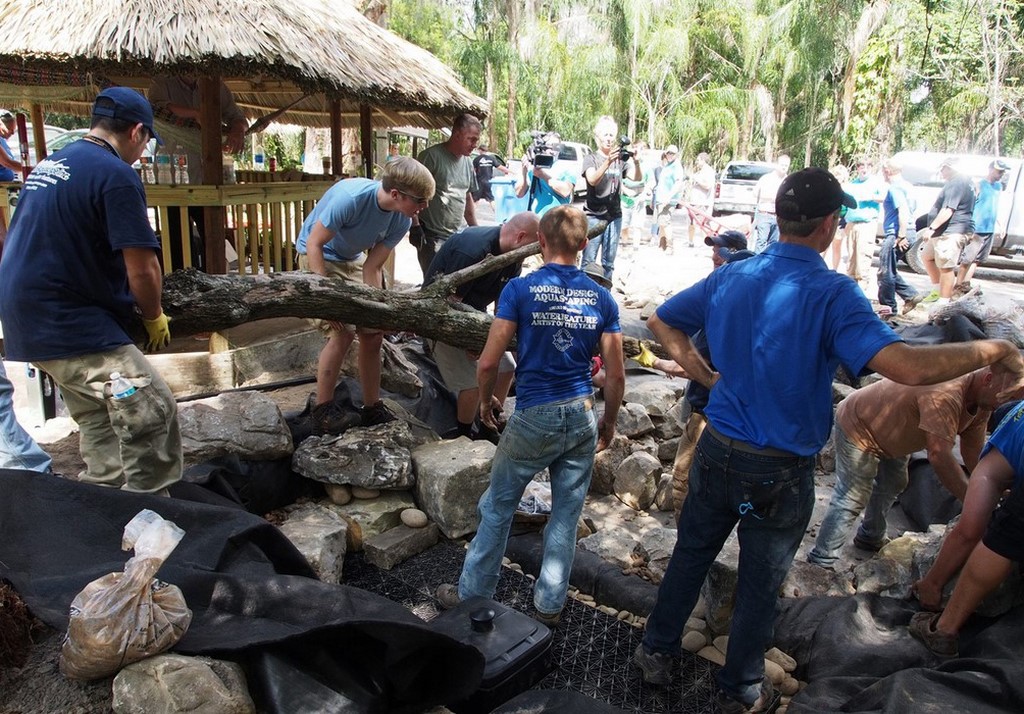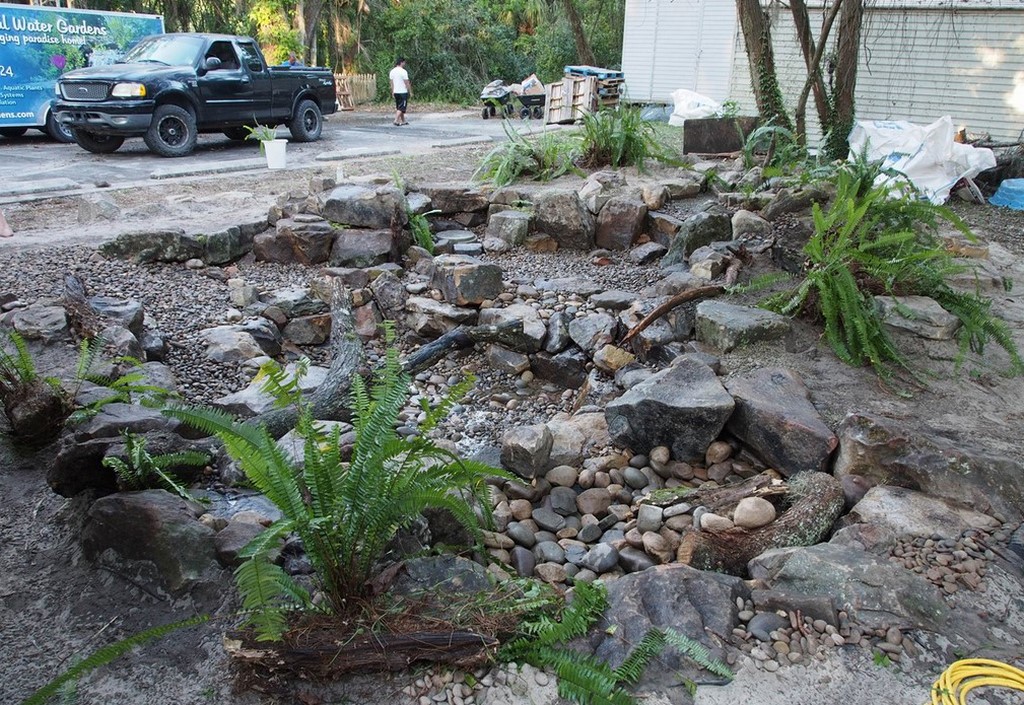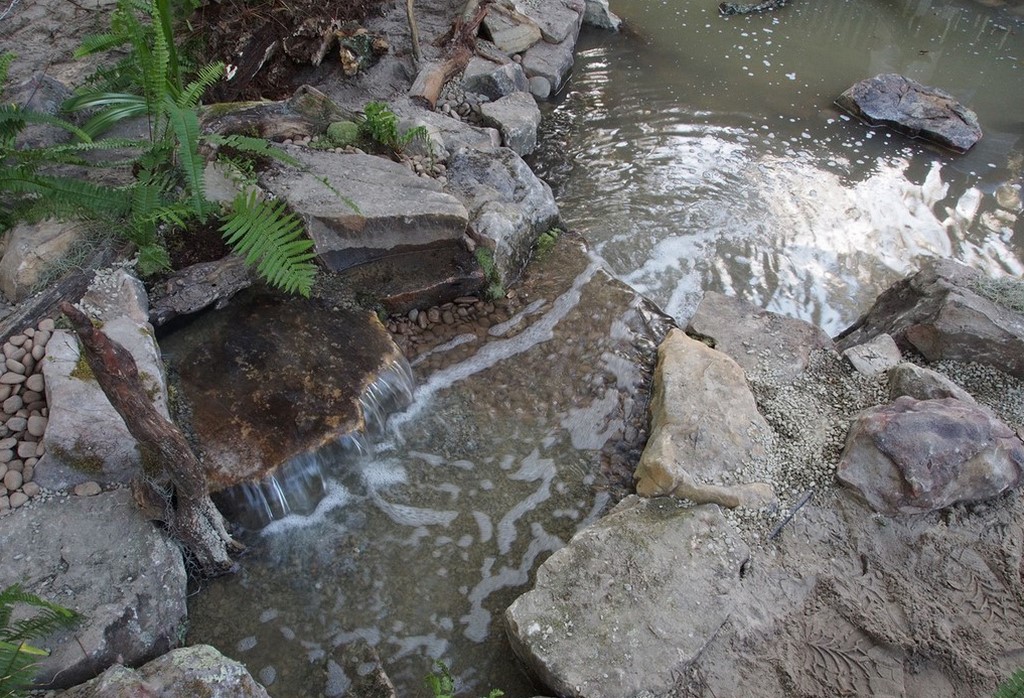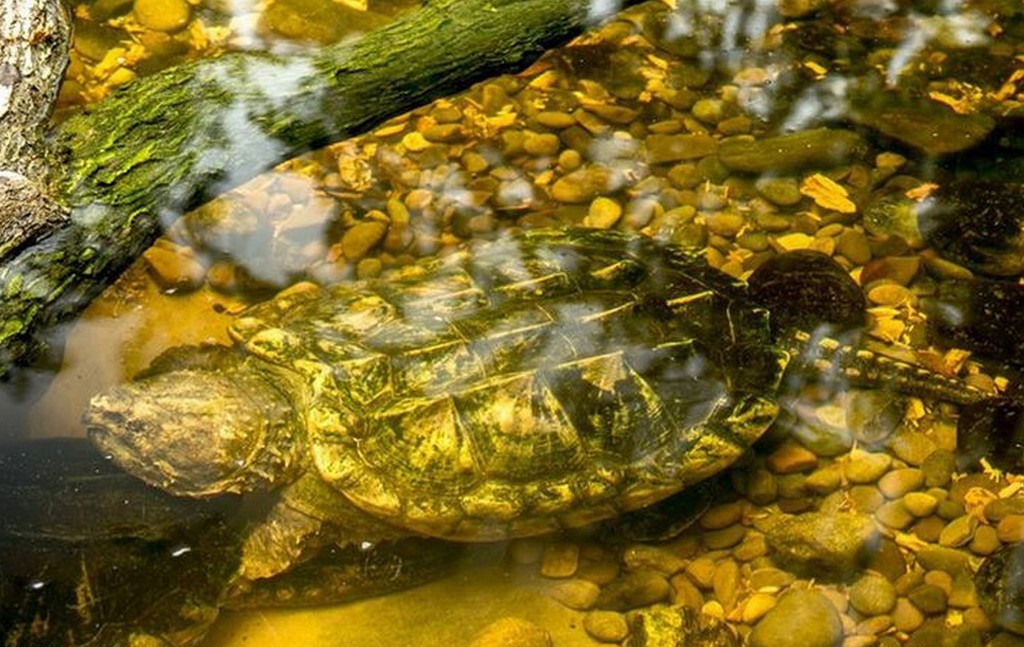From Tank to Pond

There’s little in life as soul-satisfying as working in a good cause.
As pond professionals, of course, we get lots of opportunities to do nice things for our clients – by beautifying their backyards, bringing fish and aquatic plants into their lives and creating sources of soothing serenity they can enjoy each and every day. That’s great, but in the project described in this article, the level of service reached a much higher plane.
One of the cool things about the project is that we were able to involve a lot of people – 50 pond professionals from all over the United States – in building a pond for turtles living at a research station in Florida. Another is the fact that our pond will replace a large, drab concrete tank that had served the turtles well for years but made all of us sad to see.
Once we identified the need and set our course at the corporate level, we spread the word about our plan across our network of certified pond installers and expected it would take a while to find the quantity we needed. Given the nature of the research station and the fame of the man who’d founded it, however, I guess we shouldn’t have been too surprised when the roster filled in a matter of hours.
AIDING AN ICON
The project originated when Greg Wittstock, founder of Aquascape (St. Charles, Ill.), went to Oviedo, Fla., to visit the Chelonian Research Institute. The institute, he knew, was the life’s work of Dr. Peter Pritchard, who many years ago had written the definitive encyclopedia on turtles – a book that happened to be the first one on turtles Wittstock had seen as a pond-fascinated kid.
As the tour progressed, he noticed that the turtles were being kept under rather stark conditions, including four Giant Alligator Snapping Turtles that lived in the big concrete tank mentioned above. These habitats were well within standards sanctioned by zoos and other institutions where these big reptiles are held, but to a pond guy it seemed both wasteful and a bit unkind.
The wastefulness came in the fact that the tank had no filtration system and operated with a dump-and-fill process that sent more than 1,000 gallons of tank and sluicing water to waste each week. The unkindness extended from the fact that the concrete surface was rough enough to irritate the turtles’ paws but wasn’t set up in a way that would keep their claws in trim. It was just a bleak space, with no variety or anything else to stimulate these curious, intelligent creatures.
| The concrete tank in which we first saw the big turtles was adequate to their basic needs (left), but to us they seemed unnecessarily stark and we knew we could do better. The institute’s staff found us a large slice of land on the grounds (middle), and once we’d rounded up the big crew we needed to get the job done, we went right to work in shaping the turtles’ new pond (right). |
So Wittstock offered to donate a full-featured pond with rockwork, aquatic plants and a high-capacity bog-filtration system to the institute. As it turned out, this had been something Dr. Pritchard had long desired. The wheels started turning immediately, with the call to our network going out soon thereafter.
As a trained zoologist, this project was directly up my alley and I began the process of defining project parameters as well as dealing with the logistics of this sort of charitable endeavor. Soon I was in direct contact with Zach Burke, the institute’s curator, to develop a pond that included all of the features he saw as requirements for a naturalistic environment for these specific turtles. After some back and forth, we settled on a plan, and the raw work of making it happen became our focus.
We were helped hugely on the logistical side by Kathy Smith, owner of Tropical Water Gardens in Deland, Fla. She ordered the rocks and plants and gathered up the liner and all of the equipment and fittings we needed. By the time the big day came, everything was on site and ready to go.
ORGANIZED ON SITE
All 50 of our contractors and various members of our corporate staff gathered at the institute at 8 am. By this point, we had divided the contractors into three groups under the direction of master installers who’d already participated in many of these mass collaborative efforts and were good at managing the various tasks that would need to happen as the day rolled on.
I keynoted the event with a 30-minute talk on what we were trying to accomplish and outlined what needed to happen for us to wrap things up by the end of that same day. The three groups were set up to cover pumps and equipment, the bog filter and the pond itself, with allowances made for shifting people around so everyone was involved but also had opportunities to take breaks in the Florida heat.
| Multiple skilled hands made for quick work on site. Happily, we’d had enough previous experience in staging these big installation events that all project phases moved along smoothly, from placing the liner and setting the filtration system to placing rocks and taking care in applying the finishing touches. |
This sort of loose rotation is one of the keys we’ve found to keeping our participants both happy and fully engaged: We want them to be very busy and learn as much as possible, but we’re not out to overwork anyone!
And yes, we could have brought in a smaller group and avoided some of our logistical juggling by pushing that smaller group along, but we also know that’s one sure way to make certain a given installer will be reluctant to volunteer the next time, no matter how worthy the cause.
So we started by marking the ground and began digging, happy to cut quickly through the sandy, loamy soil. The liner soon followed and before long we were preparing the bog, placing the mechanical filter and inserting all of the necessary plumbing lines and fittings and placing rocks in the pond and waterfall.
| Things went so well that we had all the time and leftover materials we needed to set up a new pond for the institute’s collection of young Galapagos turtles. We can only imagine they were happy to step out of their sad hole in the ground and find themselves in a far more agreeable aquatic retreat. |
The bog filter had to be large enough to accommodate the wastes generated by four large reptiles – not a huge quantity given the creatures’ slow metabolisms, but enough to incline us to upsize the system to maximize its aerobic qualities while accentuating its low-maintenance profile.
As we figured it, the water in the pond should last at least six or seven months rather than six or seven days and would require no more than partial replacement – perhaps a quarter of the volume – when the time came to do a deeper cleaning. As for routine maintenance, clearing away the gross waste from the pre-filter on a weekly basis should take care of it – quite a change from previous practice.
As the day moved along, we placed rocks, set up a small waterfall and decorated the space with plants and large tree branches reminiscent of the wild settings in which these creatures thrive. We stuck with our schedule – stayed a bit ahead of it, in fact – and were ready by 5 pm to introduce the turtles to their new home. As the video linked below indicates, the turtles took to the water with what seemed a spark of reptilian enthusiasm, clambering down the bank and dropping into the water without the slightest hesitation.
A GREATER CAUSE
We’d done so well with time and task management that Zach Burke asked a favor: The institute’s Galapagos Turtles had outgrown their dunking pond and would benefit from a larger upgrade. We had enough material left over from our other work that we swung into action and made this small pond happen, too – all within the same nine-hour day!
| Once the installation work was complete, we started filling the pond with water and watching proudly as it all came to life. It was immensely satisfying to get the turtles out of their concrete tank; it was even better to make this gift to the Pritchards in recognition of all their contributions to our understanding of creatures they’ll now be able to study in more natural surroundings. |
We get out installers involved in these sorts of group activities with some regularity. Not only is it a great way to keep people up with the state of the art when it comes to design details, equipment and installation techniques: It’s also a way to build a sense of community and create a national network of professionals who are more than willing to share what they know as well as their time and energy in both national and local collaborations.
Ultimately, we performed a service for a great research institution and enabled Greg Wittstock to repay some of his sense of indebtedness to one of his childhood idols. And if this small effort shows the turtle-research community that there are better ways to house these animals and place them in naturalistic environments rather than sterile tanks – all the better.
It’s impossible to tell if the turtles are truly happier in their new pond, but judging by the way one of the Giant Alligator Snapping Turtle bounded down the bank and into the water, I’d have to say they are at least more at home – and maybe even a bit more comfortable in their new surroundings.
For pond builders, it doesn’t get much more soul-satisfying than that.
To see a video recap of the project, click here.
Ed Beaulieu is director of contractor development and field research for Aquascape, Inc., St. Charles, Ill. For more information, visit www.aquascapeinc.com.










